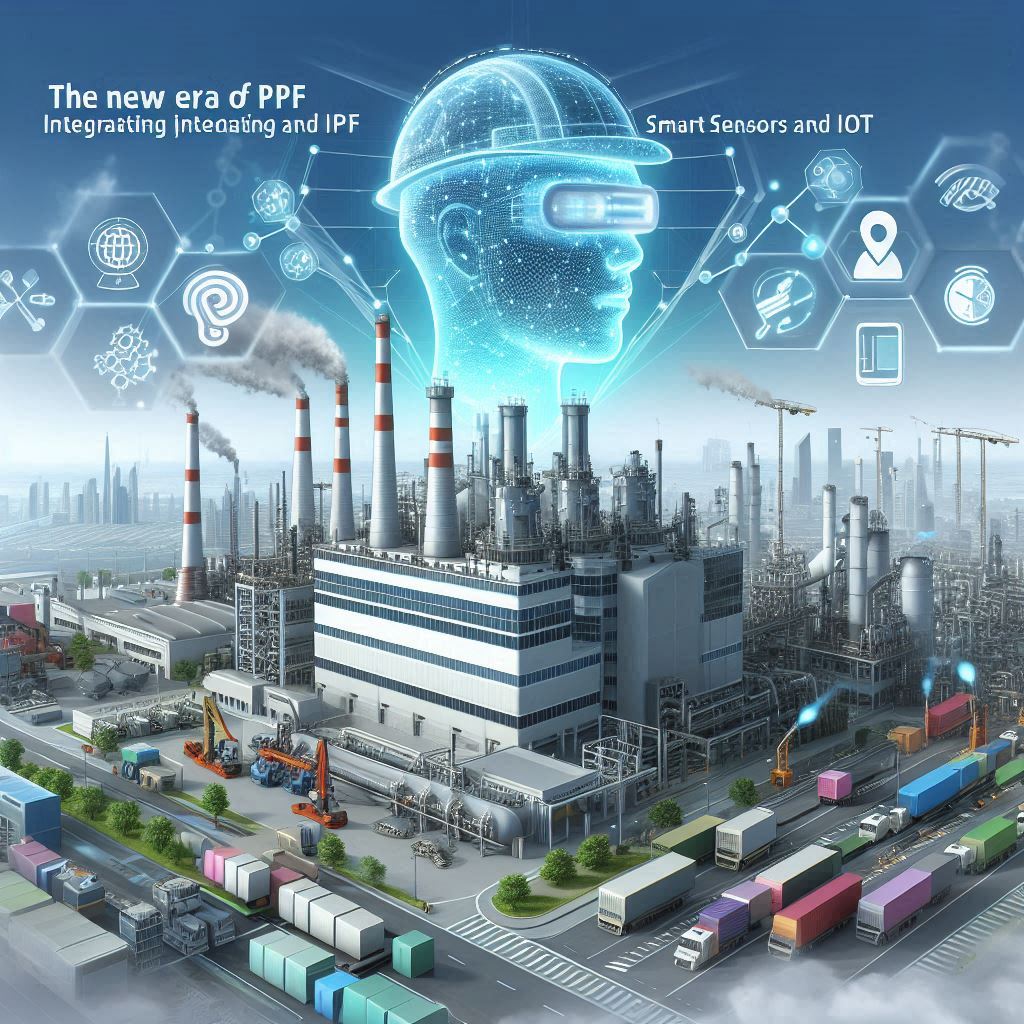
The New Era of PPE: Integrating Smart Sensors and IoT
Milan SafetyShare
Personal Protective Equipment (PPE) has always been a cornerstone of workplace safety, protecting workers from various hazards across industries. However, recent advancements in technology have revolutionized the PPE landscape, particularly through the integration of smart sensors and the Internet of Things (IoT). These innovations are transforming PPE from passive protection to active, data-driven safety solutions. This blog explores the latest technologies in PPE, focusing on how smart sensors and IoT are enhancing worker safety and well-being.
The Evolution of Smart PPE
Traditional PPE, such as helmets, gloves, masks, and protective clothing, has primarily served as a physical barrier against hazards. While effective, these devices have limitations in terms of providing real-time insights into the wearer's health and environmental conditions. The advent of smart PPE changes this dynamic by embedding sensors and IoT capabilities into protective gear, enabling continuous monitoring and data collection.
Key Technologies Driving Smart PPE
-
Smart Sensors:
- Biometric Sensors: These sensors can monitor vital signs such as heart rate, body temperature, and respiratory rate. By integrating these sensors into PPE, such as helmets or vests, workers' health can be tracked in real-time, allowing for immediate responses to any anomalies.
- Environmental Sensors: These sensors detect hazardous environmental conditions, such as gas leaks, radiation levels, and airborne particulates. This information is crucial for preventing exposure to dangerous substances and ensuring a safe working environment.
-
Internet of Things (IoT):
- Connectivity: IoT enables smart PPE devices to connect with central monitoring systems. This connectivity allows for real-time data transmission, ensuring that supervisors and safety officers can monitor conditions remotely and take prompt action when necessary.
- Data Analytics: IoT devices collect vast amounts of data that can be analyzed to identify patterns and predict potential safety issues. Advanced analytics can provide insights into worker behavior, environmental risks, and equipment performance, helping to prevent accidents before they occur.
Benefits of Smart PPE
-
Real-Time Health Monitoring:
- Continuous monitoring of vital signs helps in early detection of health issues such as heat stress, fatigue, or respiratory problems. This proactive approach ensures that workers receive timely medical attention, reducing the risk of severe health incidents.
-
Enhanced Safety:
- Environmental sensors alert workers and supervisors to hazardous conditions instantly. For example, a smart helmet equipped with gas detection sensors can warn workers of toxic gas presence, allowing them to evacuate the area quickly and safely.
-
Improved Compliance and Reporting:
- Smart PPE can automatically record data, making it easier to maintain accurate compliance records. This automated reporting reduces administrative burden and ensures that safety protocols are followed meticulously.
-
Predictive Maintenance:
- IoT-enabled PPE can monitor its own condition and notify users when maintenance or replacement is needed. This capability ensures that equipment is always in optimal condition, reducing the risk of equipment failure and enhancing overall safety.
Challenges and Considerations
While the integration of smart sensors and IoT in PPE offers numerous benefits, it also presents certain challenges:
-
Cost:
- The initial investment in smart PPE can be significant. However, the long-term benefits in terms of enhanced safety and reduced accident-related costs can justify the expenditure.
-
Privacy Concerns:
- Continuous monitoring of workers raises privacy issues. It is essential to implement robust data protection measures and ensure that data collection is transparent and consensual.
-
Technical Complexity:
- Implementing and maintaining IoT systems requires technical expertise. Organizations must invest in training and infrastructure to effectively utilize smart PPE.
-
Battery Life:
- Smart PPE devices rely on batteries, and ensuring long battery life without compromising the functionality is a critical challenge. Ongoing advancements in battery technology are addressing this issue.
Conclusion
The integration of smart sensors and IoT in PPE marks a significant leap forward in workplace safety. By providing real-time health monitoring, enhancing environmental safety, and enabling predictive maintenance, these technologies are transforming PPE from passive protective gear into active safety solutions. As the adoption of smart PPE grows, it will play an increasingly vital role in safeguarding workers' well-being and preventing workplace accidents. While challenges remain, the future of PPE is undoubtedly smarter, safer, and more connected.